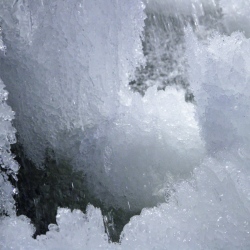
The crack in the Larsen C Ice Shelf that looks set to spawn a giant berg has suddenly forked. Satellite imagery of the 180km-long fissure acquired in recent days shows a clear branching behaviour at its tip. Quite what this means for the future evolution of the crack and the putative 5,000-sq-km berg remains to be seen. Larsen C is a floating projection of ice pushing east from the Antarctic Peninsula.
It covers an area of the Weddell Sea the size of Wales. The berg, when it calves, will remove about a quarter of the total shelf extent and could leave the remaining structure in a less stable configuration.
Scientists are concerned that Larsen C may be developing in a similar way to its siblings, Larsen A and Larsen B, which eventually collapsed at the turn of the century following their own big calving events. The 10km-long fork does not increase the length of the rift; it merely gives it a two-pronged tip. The new branch has opened on the seaward side of the main crack.
The new feature was picked up in observations from the European Union’s Sentinel-1 satellites that were downlinked on Monday. It was not there in data acquired six days earlier.
"This is one of the things I find so fascinating," said Prof Adrian Luckman from Swansea University, UK. "You look at these rifts and think they’re moving really quite slowly. But when they go, they must go very quickly. People have said they could travel at anything up to the speed of sound. It would be amazing to be on the shelf to hear it," he told BBC News.
This is the most significant change in the rift since February. Having ripped more than 60km through the shelf over the previous year, the crack then entered a so-called suture zone, which contains mostly softer, wetter ice.
This has slowed the progress of the rift tip. That said, the crack’s width continues to grow at about a metre a day and spans now more than 450m at the point where it is regularly measured.
